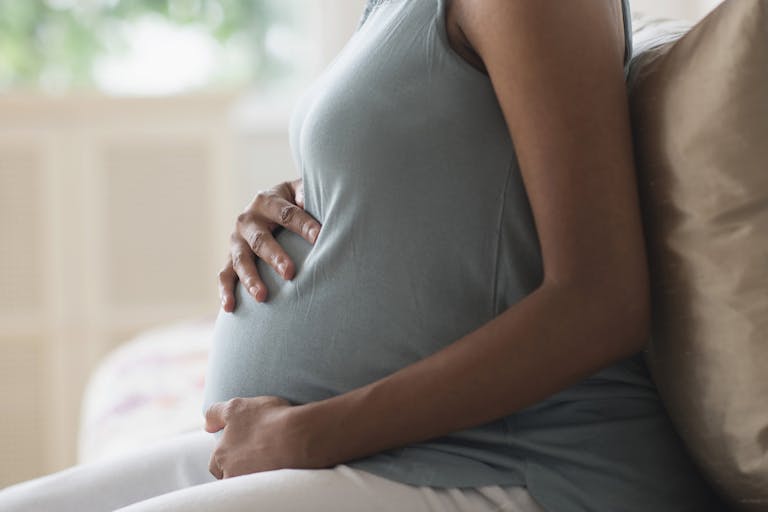
Abortions in New Jersey have risen since fall of 'Roe'
Cassy Cooke
·
Issues·By Anne Marie Williams, RN, BSN
Maternal health expert addresses abortion and maternal mortality in America
A recent episode of the EDIFY podcast explored the connection between abortion and America’s maternal mortality crisis, a timely topic, as pro-abortion politicians and abortion activists claim that the overturning of Roe v. Wade will further worsen the maternal mortality rate. The guest expert was Dr. Monique Wubbenhorst, who has over two decades of experience as both a practicing OB/GYN and a clinical researcher and who previously held the position of Deputy Assistant Administrator in the Bureau for Global Health at the U.S. Agency for International Development (USAID). Dr. Wubbenhorst separated fact from fiction and regarding maternal mortality, which rose an alarming 26% between 2003 and 2014, and provided important context for discussions about abortion as a possible solution (spoiler: it isn’t) to maternal mortality.
Dr. Wubbenhorst explained, “I’ve been studying maternal mortality for quite some time. It’s a complicated topic. It’s true that the United States has — not the highest maternal mortality rate in the world — but the highest rate in the developed world. There are a lot of reasons for that.”
Is maternal mortality preventable?
She noted, “When you break down the maternal mortality rate to a granular level, some interesting facts emerge… There’s an estimate based on reviews of actual maternal mortality data that about 60% of maternal mortality is preventable. About 40% does not appear to be preventable, and there’s a lot of reasons for that.”
The most common cause of maternal mortality is…
She went on, “Part of it is that maternal mortality often appears in healthy young women with no warning, and common causes include preeclampsia, severe hypertension [high blood pressure] of pregnancy, or pulmonary embolus [blood clot in a lung]. But, the most common cause of maternal mortality in the United States is cardiovascular [heart] disease. African-American women are at higher risk for cardiovascular complications and death during pregnancy, but also have a higher baseline risk for cardiovascular disease just out of the gate.”
While researchers haven’t pinpointed exactly why this is, Dr. Wubbenhorst said, “we do know that cardiovascular risk is strongly associated with specific behavioral and dietary risk factors, and one of the unfortunate facts in the Black community in particular is that 80% of African-American women are either obese or overweight. And given that foundation, you have higher risk for diabetes, higher risk for dyslipidemia [high cholesterol], and higher risk for heart disease.”
She clarified, “Different studies have focused on whether Black women are at higher risk pre-pregnancy, and it looks like that’s the case — that, going into pregnancy, many Black women have undiagnosed cardiovascular disease that is unmasked during pregnancy and leads to their having higher rates of mortality.”
Are poverty and care discrepancies to blame for African-American women’s higher maternal mortality rate?
Dr. Wubbenhorst shared why she believes two commonly cited reasons for higher maternal mortality rates among African-American women are inadequate.
“The reason that I don’t think that the high rates of mortality are due to two other things, which are differences in care and differences in poverty rates, is that I was involved in a study several years ago that looked at mortality rates in the South among Black, white, and Hispanic women.”
Surprisingly, she said, “I actually found that even though Hispanic women tend to be very disadvantaged financially, they have better pregnancy outcomes than Black women and, for some outcomes, even in white women. So it’s not just poverty, there’s something else going on. The other interesting fact that I want to emphasize here is that in the United Kingdom — where there’s socialized medicine, people have good access to care — women of color still have double or even higher the risk of mortality compared with white women, in a health system which pretty much covers 100% of the population. So, I think it’s complicated.”
Is abortion the answer to the maternal mortality crisis?
Given all the above, Dr. Wubbenhorst offered two reasons that abortion is not the answer to America’s maternal mortality crisis, including the disproportionately high rate of maternal mortality rate among African-Americans.
“Number one, abortion does not address risk factors. If you want to control a public health outcome or control a specific public health outcome, you focus on the risk factors. Abortion does not address any of those risk factors.”
READ: ‘Bad science’: Why you should question the lone study claiming abortion is 14x safer than childbirth
Perhaps most importantly, “Number two, we cannot estimate in any given patient what her risk for mortality is. We can say, ‘based on population-level data,’ [but] we can’t say ‘Sally, you’re going to die’… If you say, ‘well, if we do an abortion, that’s going to prevent maternal mortality,’ you don’t know whether that woman was going to die or not. And then the solution then becomes, what percentage of pregnancies do we abort? Do you abort 50% of pregnancies and therefore prevent some mortality? You don’t know. Do you abort 100% of pregnancies?”
But isn’t abortion safer than pregnancy?
Dr. Wubbenhorst also touched on why calling abortion safer than pregnancy is making an apples-to-oranges comparison.
“Pregnancy physiology is very different early in pregnancy. The fetus at eight weeks is an entirely different size, the uterus is a different size. So, if you’re really going to compare mortality rates, you would have to compare mortality rates in each trimester. And we already know that late abortions are much more dangerous and in fact there is some evidence that late abortions, especially as they get closer and closer to term, begin to approximate [mortality] related to childbirth.”
She also observed that the vast majority of abortions occur in the first trimester, when mortality risk is lowest, but abortion mortality for all gestational ages is lumped together in aggregate, essentially “diluting” the true danger of abortions conducted later on in pregnancy. Additionally, as these researchers noted, abortion predisposes mothers to increased risks in future pregnancies, including preterm birth and problems with the placenta. There are many reasons to question the claim that abortion is safer than childbirth.
Since there is no universal mandatory reporting system for abortion complications across the United States and because abortion-related complications — even those leading to death — are often treated in emergency rooms and may not be medically coded as abortion-related at all, we don’t really know the true safety profile of abortions. Hence, a meaningful, comprehensive comparison between abortion mortality and pregnancy mortality is simply not possible with current statistics.
As Dr. Wubbenhorst concluded, abortion is no solution to the problem of maternal mortality, and continuing to insist that it is does nothing to help women actually at risk.
“Like” Live Action News on Facebook for more pro-life news and commentary!
Live Action News is pro-life news and commentary from a pro-life perspective.
Contact editor@liveaction.org for questions, corrections, or if you are seeking permission to reprint any Live Action News content.
Guest Articles: To submit a guest article to Live Action News, email editor@liveaction.org with an attached Word document of 800-1000 words. Please also attach any photos relevant to your submission if applicable. If your submission is accepted for publication, you will be notified within three weeks. Guest articles are not compensated (see our Open License Agreement). Thank you for your interest in Live Action News!

Cassy Cooke
·
Issues
Angeline Tan
·
International
Cassy Cooke
·
Issues
Bridget Sielicki
·
Guest Column
Wesley J. Smith
·
Issues
Angeline Tan
·
Human Interest
Anne Marie Williams, RN, BSN
·
Issues
Anne Marie Williams, RN, BSN
·
Analysis
Anne Marie Williams, RN, BSN
·
Analysis
Anne Marie Williams, RN, BSN
·
Issues
Anne Marie Williams, RN, BSN
·